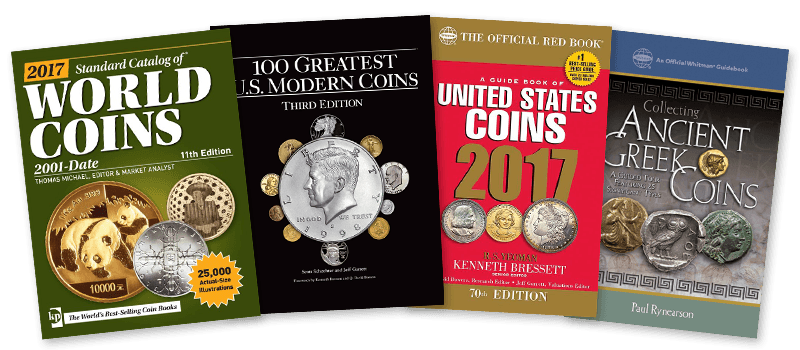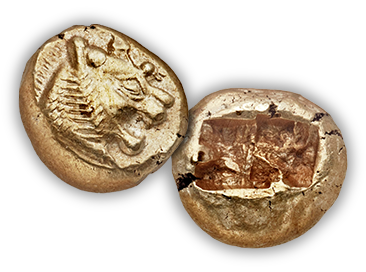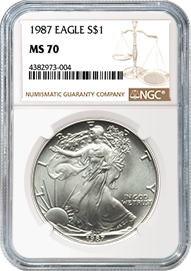Starting a Collection
There are many ways to collect coins. The simplest way is to save coins found in circulation, and this is how many of the greatest collectors got their start.
Some beginners, for example, attempt to complete a set of Lincoln Cents from circulation by looking for one coin of each date and mintmark combination. A mintmark is a letter or symbol on a coin indicating the mint where it was struck. New collectors quickly discover that some date and mintmark combinations are more challenging to locate than others, and they may turn to a coin dealer to buy an example to fill the empty slot in their collection.


1914 Lincoln Cents struck at the Denver and San Francisco Mints
Many collectors are interested in coins composed of precious metals such as silver and gold; these coins, of course, cannot be found in circulation — unless you get very lucky! These collectors rely on coin dealers who have storefronts, websites or other sales channels to help build their collections. Modern coins can often be purchased directly from the issuing mint as well.
Dealers are easy to find through the NGC Dealer Locator and the Professional Numismatists Guild (PNG), whose members are bound by a strict code of ethics and professionalism.
There are numerous collecting areas, and what someone chooses to collect depends on their interests, budget and other factors. Coins, tokens and medals from ancient times to the present day can be collected on any budget.
Among the most common types of collections:
- Date set: a complete set of every date and mintmark issued of a particular coin design.
- Type set: a set that includes one example of each coin design, such as a collection of every one-cent coin design issued by the United States.
- Thematic set: a collection focused on a particular theme — for example, cats or ships on coins.
- Variety set: a date set that includes different varieties of each date and mintmark combination. Varieties are differences in the dies used to strike a particular issue. Variety sets are more challenging than other types of sets, and are often built by more advanced collectors.
Coins are enjoyed for their designs, value, subjects, history, eye appeal, rarity, condition and countless other reasons.
Learning About Coins
A common saying in coin collecting is "Buy the book before the coin." In other words, buy a book about coins — or go online — to learn as much as possible about the coins that you want to collect before you start buying them. An educated collector almost always makes better buying decisions.
NGC is committed to providing collectors and potential collectors with as much free educational material as possible on its website. There are research articles, price guides and numerous other online resources. Some of these resources are designed for collectors of all levels, while others are geared for more advanced collectors.
There are many basic and specialized reference books about coins. For collectors of US coins, A Guide Book of United States Coins (the "Red Book") by Richard S. Yeoman, edited by Kenneth Bressett, is a must-have.

Books are a great place to get started – and further your knowledge.
If you do not wish to buy a lot of books, the American Numismatic Association (ANA), which was founded in 1891 and is the only coin-collecting organization chartered by Congress, maintains a lending library for its members to borrow books through the mail. NGC is the official grading service of the ANA.
Hobby periodicals and newsletters can also help you keep up with the latest coin-collecting news and research. The ANA publishes a monthly magazine, The Numismatist, for its members. Coin World and Numismatic News are popular weekly periodicals. NGC also sends a free monthly eNewsletter. Subscribe now >
Coin Grading
A coin's condition is one of the most important factors in determining its value. An uncirculated coin, which has no trace of wear, is almost certainly going to be worth more than a circulated, or worn, example of the same coin. The difference in value can sometimes be extreme.
It is therefore essential that collectors fully understand a coin's condition. Originally, a basic system of adjectival grades was used to describe a coin's condition, with additional adjectives added over time. The most heavily worn coin was described as "Poor," while the most pristine was described as "Gem Uncirculated." Other adjectival grades filled the gaps: Fair, About Good, Good, Very Good, Fine, Very Fine, Extremely Fine, About Uncirculated and Uncirculated.

In the late 1940s, collector, researcher and author Dr. William Sheldon developed a numeric scale from 1–70 to describe the condition of early US cents. Collectors quickly embraced this scale for other coin types, and it became the industry standard.
NGC adopted the 1–70 scale when it was established in 1987 (see the NGC Grading Scale). At that time, there was a significant need for an impartial authority not only to assign a grade to a coin, but also to guarantee that the coin was genuine.
NGC uses a team of coin graders to authenticate a coin and determine its grade. After the coin is authenticated and graded, it is encapsulated in NGC's secure, tamper-evident holder with a label bearing a description of the coin and its grade. Since NGC's graders are required to be impartial (they cannot buy or sell coins commercially, or know the identity of the submitter), the grades that they assign are trusted by collectors and dealers around the world.
Coins graded by NGC are also backed by the NGC Guarantee, which provides compensation in the rare event that NGC mistakenly assigns a grade that is too high or grades a coin that is counterfeit. This guarantee, the strongest in the industry, helps to protect collectors and give them more confidence in their purchases. As a result, NGC-graded coins have higher value and greater liquidity.
Coin Community & Resources
The coin-collecting community is vibrant and tightly knit. There are numerous organizations for coin collectors, including several national ones, and many local and regional clubs. Clubs have also been established for particular collecting specializations.
The largest coin-collecting organization is the American Numismatic Association (ANA). Founded in 1891 and headquartered in Colorado Springs, Colorado, the ANA publishes a monthly magazine, holds conventions, conducts educational seminars and promotes the hobby. Learn more about the ANA >
Local coin clubs often hold regular meetings where their members can get together to meet other collectors and talk about coins. The ANA provides a directory of its member local and specialized clubs on its website.
Another way to meet other collectors and talk about coins is on the Internet. There are many free coin-collecting forums and message boards. NGC, for example, has chat boards on its website where collectors can make posts and communicate with each other.
NGC has also created the NGC Registry, which gives collectors of NGC-certified coins another opportunity to interact. The NGC Registry lets you register your NGC-certified coins in a variety of defined categories using the unique serial number on the holder, display images and descriptions of the coins for other collectors to enjoy, and compete against fellow collectors around the world for the best sets. Learn more about the NGC Registry >
Educational Resources
FAQs
Terminology
NGC News & Articles
NGC Coin Explorer (US Coins)
Memberships and Periodicals
Join the ANA
Subscribe to Coin World
Subscribe to Numismatic News
Add Coin
Join NGC for free to add coins, track your collection and participate in the NGC Registry. Learn more >


